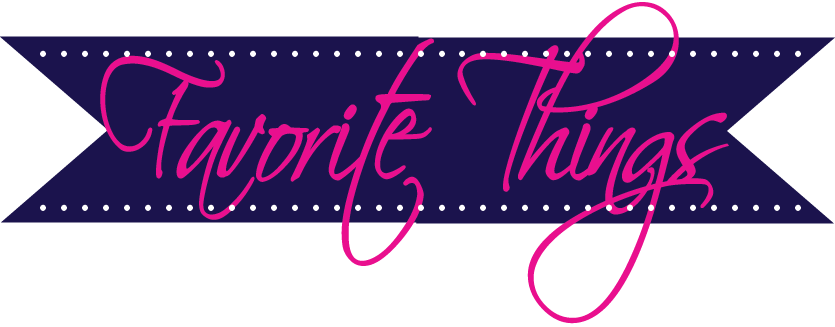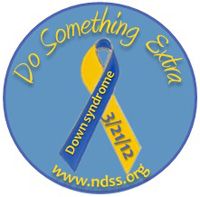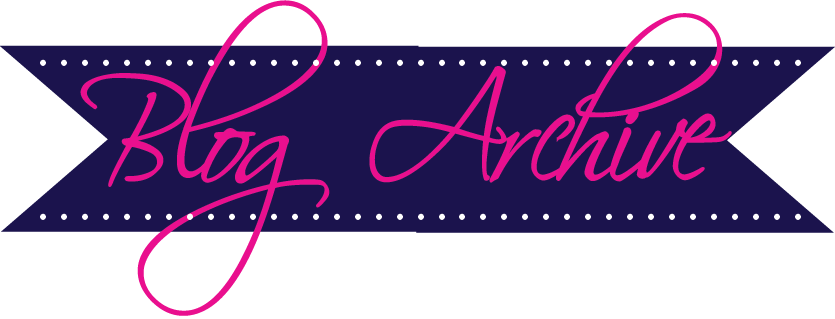Not only is their blog incredibly helpful, it is also supremely organized. They have a running list of all the topics they have blogged about and I could spend day and night just reading their posts and thinking about how to integrate their ideas into our daily lives.
View Posts by Category
I found their blog by accident when I was researching speech, language and reading topics for working with Joey. For so many of us who have children with Down syndrome, speech is a very key element. I believe that if I can help Joey be able to speak it will greatly improve his entire life. Part of speaking is hearing. Many children with Down syndrome have incredibly small ear canals. I mean like super, incredibly small. Right now, Joey has some hearing loss and we are looking into ear tubes and into having his ears drained of the fluid that is in them, but at this point the ear doctor thinks his ears may even be too small for the tubes to be put in. Honestly, I can't wait for him to get tubes because my hope is that they will not only improve his hearing and speaking, but they may also help improve his balance, which could eventually (fingers crossed) lead to helping him get up on all fours and then learn to crawl and then eventually walk.
Below is just a sample of one of the many, many awesome blog posts that Bill and Ria share. I don't know how else to say it, but these folks are VARSITY!!! I mean, VARSITY, people! They have got it going on and I stalk their blog to learn as much as possible.
For all of their amazing work and for the time they take to share it with all of us parents who have children with Down syndrome who benefit from their hard work, I thank Bill and Ria. Thank you for your time, your creativity, your passion, your dedication and all the energy you spend on your phenomenal projects.
Wednesday, August 4, 2010
Speech and Reading Connection
 Thirty minutes after dinner today, Matthew was trying to open the pantry door, unsuccessfully twisting the doorknob. He looked at me and signed "cereal". So I opened the pantry door for him, gave him the box of Cheerios. He promptly set the box of Cheerios on the table. Then he came back to me and said "boh", asking for a bowl for his cereal.
Thirty minutes after dinner today, Matthew was trying to open the pantry door, unsuccessfully twisting the doorknob. He looked at me and signed "cereal". So I opened the pantry door for him, gave him the box of Cheerios. He promptly set the box of Cheerios on the table. Then he came back to me and said "boh", asking for a bowl for his cereal.Thirty minutes after lunch today, Matthew climbed back into his high chair and signed "eat". Then he kept saying "tap-tap-tap". I offered crackers, cereal, yogurt, juice, and water. He said "doh" to all of it. Then finally I asked if he wanted pears. He giggled and said "es". He wanted to stab-stab-stab (tap-tap-tap) and eat pears (with a fork).
There have been other instances of communication like this, which makes me very happy and proud of him. He combines sign andspoken words when communicating with me. Most of his spoken words still aren't clear but they are a close enough approximation to the word. Obviously, there are still times when it takes me several minutes to decode what he's trying to tell me. But I understand him whereas someone who isn't accustomed to hearing him talk won't probably get what he's saying.
In the past 2 or 3 weeks, he's been very motivated and interested to say words that we've been teaching him. He verbalizes at least one new word, if not several, every week. I'm beginning to lose track of all the new words he's picking up on. His latest spoken words are "o-keh" (okay) and "es" (yes - while nodding his head). He has also begun to say "mmmm" as we try to get him to say "more". He currently says "o-weh" for "more".
Learn to Read = Learn to Speak
I read in the book "Teaching Reading to Children with Down Syndrome" that some kids tend to become more verbal when they start to learn to read.
 This fueled my interest to introduce sight words to Matthew. I started with 7 words (Daddy, Mommy, Matthew, cat, milk, ball, apple) about 4 months ago with the idea that he would get used to looking at words and not just pictures, especially when we read books at bedtime. Teaching him to read the word as it is spelled (phonetically) will be a lesson for another day. My goal was simply to make him aware of words.
This fueled my interest to introduce sight words to Matthew. I started with 7 words (Daddy, Mommy, Matthew, cat, milk, ball, apple) about 4 months ago with the idea that he would get used to looking at words and not just pictures, especially when we read books at bedtime. Teaching him to read the word as it is spelled (phonetically) will be a lesson for another day. My goal was simply to make him aware of words.With the sight words, we worked on labeling, identifying and matching first. While pointing to the word flash card, I would say "This word says Daddy." I'd have another flashcard with the photo and word in front of him and then I'd say "Let's put 'Daddy'(the word) on Daddy (the photo card)." Once he seemed like he could identify and match 'Daddy' to 'Daddy', I gave him a choice between a blank flashcard and the one with the word 'Daddy'. Then I introduced the other sight words to him as we went along. We'd work on it for a minute at a time, a few times a day, almost everyday. When he was really interested, he worked on it for 5 minutes. But I've learned that duration isn't as important as repetition. As long as he's interested, he's soaking it all in even if it's just for a minute.
The instructions in the book suggest introducing a new word only once the previous one has been mastered. But I got overly excited and decided to make more words. I put them on our fridge, on toy boxes, and even made placemats for him.


 All this in addition to the picture cards I already made for him months ago. I'm running with the idea that constant exposure to words is good too, and not just when we're working on our sight word cards. He may not be able to read and understand them now but pointing them out and saying them whenever I get a chance helps him be aware of the word. When reading books, I make sure I point to the word as I read to him. Over time, I'm sure he'll begin to recognize familiar words and know their meanings. He's already pointing to words while babbling, demonstrating that he's aware that they mean something.
All this in addition to the picture cards I already made for him months ago. I'm running with the idea that constant exposure to words is good too, and not just when we're working on our sight word cards. He may not be able to read and understand them now but pointing them out and saying them whenever I get a chance helps him be aware of the word. When reading books, I make sure I point to the word as I read to him. Over time, I'm sure he'll begin to recognize familiar words and know their meanings. He's already pointing to words while babbling, demonstrating that he's aware that they mean something.I explored several early reading programs. Despite the very helpful comments I received on my post about early reading programs, I'm still unsure about which ready-made program to try. I'll use my homemade materials until we make a decision.























No comments:
Post a Comment
Thank you for your comment! We read every comment!